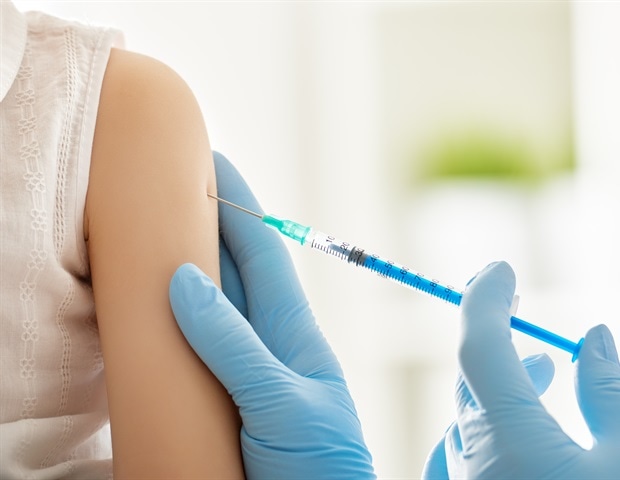Reviewers’ Notes

Scientists leverage machine learning and AI to guide vaccine development
From tackling homework challenges to drafting emails, people are discovering a vast array of applications for natural language processing tools like generative artificial intelligence (AI) engines. Now, researchers from Pacific Northwest National Laboratory (PNNL) and Harvard Medical School (HMS) are using this same kind of technology to build a knowledge base in order to guide decision-makers on vaccine development. Through the Rapid Assessment of Platform Technologies to Expedite Response (RAPTER) project, the scientists leverage machine learning and AI to search the scientific literature for knowledge on how to build effective vaccines against new infectious viruses and bacteria.
Historically, vaccine development is a lengthy and expensive process-;often taking multiple years and millions of dollars to complete. Vaccines are typically made using one of several different strategies, or "platforms." However, different strategies can generate different immune responses. With RAPTER, researchers figure out which strategy would work best for a specific virus or bacteria to maximize the value of immune responses from the host. The tool aims to help produce new vaccines more rapidly and with a reduced timeline and cost.
Speed-reading with AI
Part of being a scientist involves publishing research results so that other scientists may learn from the experiments.
"There is a lot of information already in existence in scientific literature-;too much for any person to possibly read through," said data scientist and PNNL RAPTER lead researcher Neeraj Kumar. "We are building RAPTER to automatically comb through the literature and catalog results from different experiments on vaccine design strategies-;ultimately providing decision-makers with information to select the best strategy for the next pandemic."
Under the RAPTER project, PNNL scientists work closely with colleagues from HMS to automatically extract information from scientific publications in a meaningful way. "For our part of the RAPTER project, we aim to learn from existing successes and failures in vaccine design through the scientific literature and build robust artificial intelligence decision-making tools for vaccine design," said HMS's Director of Machine-Assisted Modeling and Analysis Benjamin Gyori.
HMS scientists have already built similar tools for small molecule design. However, vaccines and immunology are much more complex. Together, we are building upon those tools to automatically extract key information from publications to understand more about the immune responses using different vaccine strategies."
Jeremy Zucker, PNNL computational scientist
PNNL and HMS scientists make this possible by defining the key terms that connect mechanisms of immunity to experimental measurements. Once the terms are defined, the RAPTER tool can identify the relationships between terms across different scientific publications. This information feeds into the Knowledge Extraction for Strategic Threat Response using Evidence from the Literature (KESTREL) database to build an extensive graph of relationships in the immune response.
"Understanding these relationships in the immune response can help us predict how different vaccine strategies can provide protection," said Kumar. "With this knowledge, scientists can focus their efforts on strategies that are more likely to succeed."
Defending against future threats
For decades, the Department of Defense's Defense Threat Reduction Agency (DTRA) has mitigated emerging threats-;from nuclear to biological-;with science, technology, and capability development investments. As evidenced by the effects of COVID-19, pandemics pose a major threat to national security. To help protect us against future pandemics, DTRA supports a consortium of research institutes, led by Los Alamos National Laboratory (LANL), in the development of the RAPTER tool.
In contrast to PNNL and HMS's efforts, scientists at LANL are collecting and curating raw experimental data on viruses and vaccines and using artificial intelligence to identify patterns within the data to build a profile for each vaccine candidate. Researchers from Lawrence Livermore National Laboratory, Sandia National Laboratories, U.S. Army Medical Research Institute of Infectious Diseases, Northern Arizona University, Tulane University, University of California San Diego, University of New Mexico and University of Nevada at Reno also contribute to the project.
Once the initial computational tools are built, the research institutes will combine their efforts to experimentally validate their results. Researchers including PNNL's biomedical scientist Zachary Stromberg will work to experimentally confirm the computational results for the mRNA platform-;the same platform used in the vaccine against SARS-CoV-2.
"Together, we can build an automated pipeline to expedite scientists' vaccine design efforts," said Kumar.
Pacific Northwest National Laboratory
Posted in: Device / Technology News | Medical Science News
Tags: Artificial Intelligence, Bacteria, covid-19, Immune Response, immunity, Immunology, Infectious Diseases, Laboratory, Language, Machine Learning, Medical Research, Medical School, Molecule, Pandemic, Research, SARS, SARS-CoV-2, Technology, Vaccine, Virus